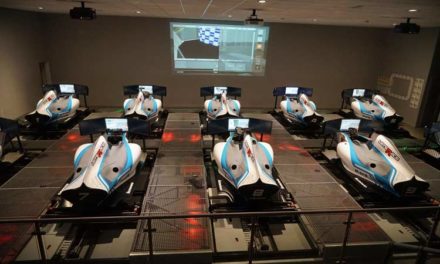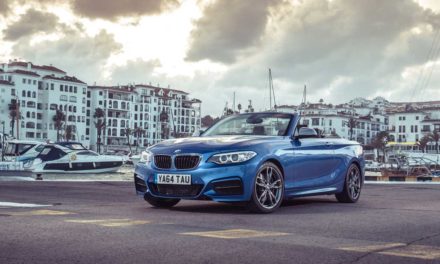Great Britain. Porsche returns to Le Mans this weekend – ahead of arguably the toughest motor race in the world, an ambitious road trip has taken the company’s track to road technology transfer philosophy and literally applied the lessons of the race to the street.
Le Mans 2016 – the Porsche 919 Hybrid of Marc Lieb, Romain Dumas and Neel Jani raced flat out for 384-laps, covering a total distance of 5,233 km to win the renowned race for a record 18th time. Yet, next weekend (17/18 June), when Neel Jani, André Lotterer, Nick Tandy, and Brendon Hartley, Timo Bernhard and Earl Bamber’s pair of 919 Hybrids complete their journey, they’ll finish exactly where they began.
Le Mans Is A Phenomenal Feat Of Endurance
Just finishing Le Mans is a phenomenal feat of endurance – the scale of the distance the cars cover is extraordinary. And if you unravelled the laps covered by the Porsche 919 Hybrid at Le Mans last year, it travelled a distance equivalent to that from Bodø, Norway – five hours north of the Arctic Circle – to Tarifa in Spain – the most southern point of Europe – non-stop. Fittingly, seven Porsche road cars, each with a link to the Porsche Motorsport programme and the race-winning technology of the 919 Hybrid, have done just that following this exact route.
As temperatures fell below freezing, a Porsche 718 Cayman, 718 Boxster, 911 Turbo S, Macan GTS, Cayenne S E-Hybrid, Panamera 4S Executive and a 918 Spyder departed the coastal town of Bodø. Driving the cars were independent journalists from China, Japan, Spain, Italy, France, Belgium, Germany and Great Britain – with support teams of drivers stationed around Europe to take the wheel during the night while the journalists slept on special coaches that followed the convoy.
In keeping with Le Mans (which is as much a human test of endurance behind the wheel as it is a mechanical feat for the cars) aside from driver changes and refilling the fuel tanks, the cars drove continuously for 64 hours.
The convoy visited eight countries, travelling from snow and temperatures below freezing to the 30-degree heat and sand dunes of Tarifa. The convoy witnessed ice, sleet, snow, hail, rain and scorching sunshine. Despite being the furthest distance ever recorded by the cars in so little time, the sole technical challenges they sustained totalled two punctures and a chipped windscreen.
In parallel with the endurance run of the road cars, a 36 hour non-stop test was carried out by the Porsche LMP1 team at Motorland Aragon in Northern Spain. The full speed rehearsal saw a single 919 Hybrid driven by all six Le Mans drivers – and reserve driver Marc Lieb – gathering vital data and experience at the final test before the 24 Hours in France itself. A scheduled driver change for the road cars at the track allowed the journalists to witness the LMP1 team in action as the build-up to Le Mans gathered pace.

British Porsche Factory
British Porsche factory race driver and 2015 Le Mans winner Nick Tandy met the journalists along with 2016 Le Mans winner Marc Lieb at the Aragon track minutes before Tandy took over for his driving stint: ‘The speeds are lower and they’re on roads, but what the journalists have set out to do is really hard and has a lot in common with what we go through,” commented Nick. “Covering big distances is tough – you’re tired and you need to look after yourself and the rest of the team. You can’t be a big personality and claim it’s all down to you, as in endurance racing that won’t work – and I reckon the same is true of what the journalists are doing. The whole effort is about the team and working together. That, plus endurance, hard work, concentration and cars that are engineered to be tough yet very, very fast. If I’m honest, I’m amazed by how fresh everyone looks– but then Porsche sports cars are phenomenal at this kind of thing.’
Just over 66 hours, 5,406 km (3,359-miles), eight countries and with an ambient temperature 35 degrees warmer than where the journey began, all seven cars arrived in the town of Tarifa – reaching the most southern point in Europe, and with the backdrop of the North African coast. As with the Porsche LMP1 Team test, the cars finished a little dirtier than when they set out, yet didn’t miss a beat. The journalists reported feeling tired, but elated and ache free. Le Mans had been unravelled, in spectacular style.
André Lotterer, Porsche LMP1 driver, added: ‘These parallel tests were worlds apart, but give the journalists a taste of what Le Mans is all about. The cars stood up perfectly and the ambition behind our decision to conduct a 36 hour test and for the journalists to take on eight countries non-stop really epitomises what Porsche is all about, whether on the road or on the track. Seeing everyone smiling at the end – happy and proud of what they’ve achieved, it’s all about teamwork. Well done! Next up, the real thing.’






















